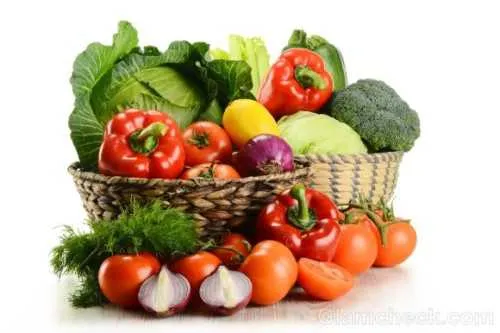Health Benefits of Vegetarian Diet
Vegetarian diet has many health benefits but eating one kind of food can make you deficient in one or more nutrients therefore it is necessary to include each and every nutrient in your plate to make a balanced and healthy diet. Here are some healthy eating principles for a vegetarian diet.
Use whole grains
When a grain is processed, it loses few or more percentage of total nutritional value but whole grain has all its part intact means germ, endosperm and bran. The outer layer of grain (bran) is high in fiber content while the remaining parts (germ and endosperm) are rich in antioxidants, vitamins and minerals. According to studies, consumption of whole grains can reduce the risk of heart disease, obesity, diabetes, high blood pressure, and high cholesterol.

Look at the fiber
Fiber is very important in a healthy diet as it makes your food tasty, keep you full for long time, control hunger, lower cholesterol, promote growth of healthy gut flora, promote and stabilize bowel movements and detoxify your digestive system. The insoluble fiber doesn’t get absorbed by the body but it cleans your digestive tract while it traces the digestive path. It also adds bulk to your stool while allowing the intestine to absorb excessive water from it which maintains the bowel movement. The recommended daily intake of fiber is 20 – 35 grams of fiber but estimates shows that we only take 14 grams of fiber every day which is very less. Increasing your fiber intake is not a difficult task because all you need to do is divide the fiber intake in three groups means 10 grams in breakfast, 10 at lunch and take the remaining 10 grams in dinner and you can easily consume your recommended amount. Here are some tips to increase your fiber intake.
- Replace your bowl of cereals with bran or oatmeal in breakfast and whole wheat couscous with white rice.
- Eat the fruit such as apple, pear, guava, potato with skin on
- Eat snacks like biscuits or crackers which have at least 2 grams of fibers in each slice or serving.
- Vegetables start losing their nutritional value while cooking therefore don’t look them for long time.
- Replace your unhealthy snacks with raw fruits and veggies like salad, smoothie, seed and nuts etc.
Go with season
Every season has its unique produce of fruits and vegetables. Seasonal fruits are tasty, fresh, healthy and available on reasonable prices. You can have squashes in summers and enjoy sprouts in winters.

Protein portion
Observe your plate to know how much protein you are taking and what the sources which you are currently using are. If you include lots of dairy products and avoid plant based food then you must be taking saturated fat along with protein which can be harmful for health. Try to include more of beans, lentils, nuts, rice, and soy products such as tofu and tempeh in your diet as protein resource.
Calcium requirement
This mineral is very important for proper functioning of muscles and bones. You can meet your daily calcium requirement by dairy products such as milk, cheese, yogurt or curd. According to U.S. Department of Agriculture (USDA), foods items which contain oxalic acid (found in spinach, sweet potatoes, and beans) or phytic acid (found in unleavened bread, raw beans, seeds, and nuts) prevent the absorption of calcium into the body by binding themselves with the calcium ions. Therefore, it is suggested that you consume different sources of calcium throughout the day to meet your daily requirement of calcium.
Understand the color factor
Fruits and veggies are found in different color but have you wondered that why these items are having colors. Vitamins and phytochemicals are responsible for the skin color of fruits and vegetables and colorful food items have many health features like it contains antioxidants, anti-inflammatory properties and having immune boosters. Now you must have understood why every dietician and health article suggests you to have a rainbow of fruits on your plate.
